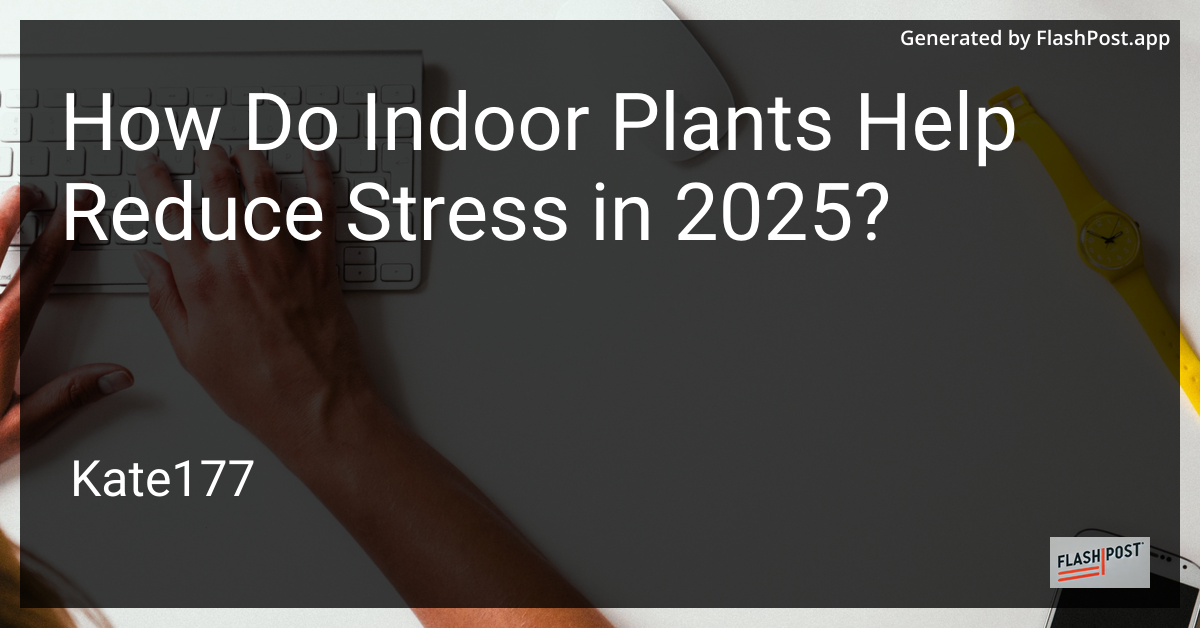
In an ever-evolving world, the pursuit of tranquility has become more significant than ever. As we delve into 2025, indoor plants stand as an increasingly popular avenue for achieving a stress-free lifestyle. This article explores how indoor plants contribute to reducing stress and enhancing well-being, proving essential to our mental health toolkit.
The Revival of Biophilia: Connecting with Nature
Biophilia refers to the innate human connection with nature. In 2025, as urban areas continue to expand, our interaction with the natural environment becomes limited. Indoor plants bridge this gap by bringing nature into our homes and workplaces. This reconnection with nature satisfies our innate biophilic tendencies, thereby significantly reducing stress levels.
Purifying the Air: Breathing Easy
Indoor air quality has become a primary concern, and plants like the snake plant and peace lily are known for their air-purifying properties. By filtering toxins and releasing oxygen, these plants lead to cleaner air, promoting better breathing and reducing anxiety. The calming effect of improved air quality can be particularly beneficial during times of heightened stress.
Enhancing Aesthetic Appeal and Mood
Having aesthetically pleasing surroundings can profoundly impact our mood. The vibrant greenery and diverse textures of indoor plants add a touch of beauty to any space, making it more welcoming and comforting. This visual stimulation can uplift one's spirits and provide a sense of relaxation, crucial for stress management.
Promoting Mindfulness and Routine
Caring for indoor plants requires regular attention and can become a part of a mindful routine. Watering, trimming, and observing growth encourage us to slow down and focus on the present moment. This practice of mindfulness is known to be an effective strategy for reducing stress and anxiety.
Linking Indoor Plants to Broader Lifestyle Choices
Embedding indoor plants into your lifestyle can inspire other healthy habits. For example, embracing a plant-based diet can further cultivate physical and mental wellness. Consider exploring resources like plant-based diet tracking to complement your well-being journey.
Creating a Pet-Friendly Environment
For pet owners, integrating plants into your living space should consider the safety of all inhabitants. It's crucial to know which plants are safe for pets. For example, if you are curious whether your dog can interact safely with plants like eggplant, check out can dogs eat eggplant?.
Conclusion
In 2025, indoor plants play a fundamental role in reducing stress and promoting a peaceful environment. Whether through improving air quality, connecting us with nature, enhancing aesthetics, or integrating into a mindful routine, the benefits are undeniable. Start transforming your living space today, and for outdoor greenery enthusiasts, explore outdoor planter sales to extend your garden sanctuary beyond the indoor realm.
By embracing the natural world through indoor plants, we build a resilient fortress against the daily stresses of modern life, allowing us to flourish amidst the challenges of our time. ```
Note: This article is presumptive and forward-looking in tone, aiming to predict the trends and practices in 2025. It connects various lifestyle aspects to enrich the reader's approach to stress reduction through indoor plants.